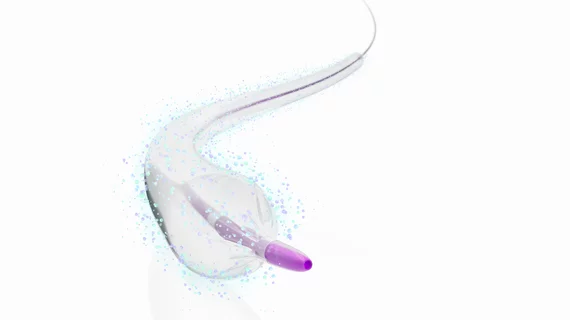FDA says treating PAD with paclitaxel-coated devices does not increase mortality risk
The U.S. Food and Drug Administration (FDA) has updated its stance on using paclitaxel-coated devices to treat peripheral artery disease (PAD), reversing restrictions originally put in place back in 2019.
At the time, the FDA warned that paclitaxel-coated balloons and paclitaxel-eluting stents appeared to be associated with a heightened risk of long-term mortality. This was based on a meta-analysis published in Journal of the American Heart Association (JAHA) in December 2018, which showed a higher mortality rate after two years.[1] The FDA immediately issued warnings about the use of these devices.
In addition to closely monitoring any patients who had already been treated with one of these devices in 2019, the FDA also recommended considering alternative treatments for certain high-risk patients in the future. Healthcare providers were advised to discuss these risks with PAD patients to ensure they understand the different treatment options available to them.
This caused a major stir in interventional cardiology and prompted the collection of additional safety data on these devices, which led to the FDA's change of heart.
In its announcement Tuesday, July 11, the FDA said “the data does not support an excess mortality risk for paclitaxel-coated devices.” This updated recommendation covers all paclitaxel-coated devices used to treat PAD, including “all models, lots and unique device identifiers.”
To reach this updated conclusion, the agency reviewed a meta-analysis developed by multiple device manufacturers and then examined data from several additional studies with a mean or median follow-up period that ranged from 1.7 to 3.5 years. According to the FDA, none of these studies concluded that patients treated with a paclitaxel-coated balloon or paclitaxel-eluting stent may face a heightened long-term risk of mortality.
Additional information from the FDA on the use of paclitaxel-coated balloons and stents to treat patients presenting with PAD is available on the agency’s website.
“Paclitaxel-coated balloons and stents have been shown to improve blood flow to the legs and decrease the need for repeat procedures to reopen blocked blood vessels,” the agency wrote.
Paclitaxel is an antiproliferative drug used to on stents and balloons to prevent neo-intimal hyperplasia. This is an accumulation of scar tissue in some patients as the vessel wall heals from the barotrauma caused by balloon angioplasty.

